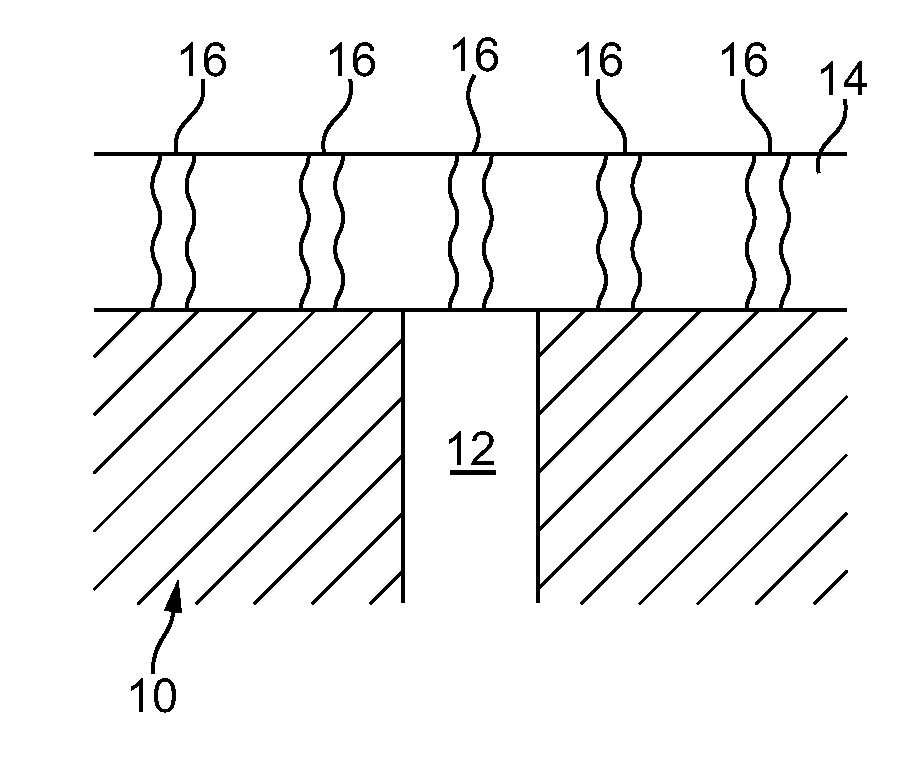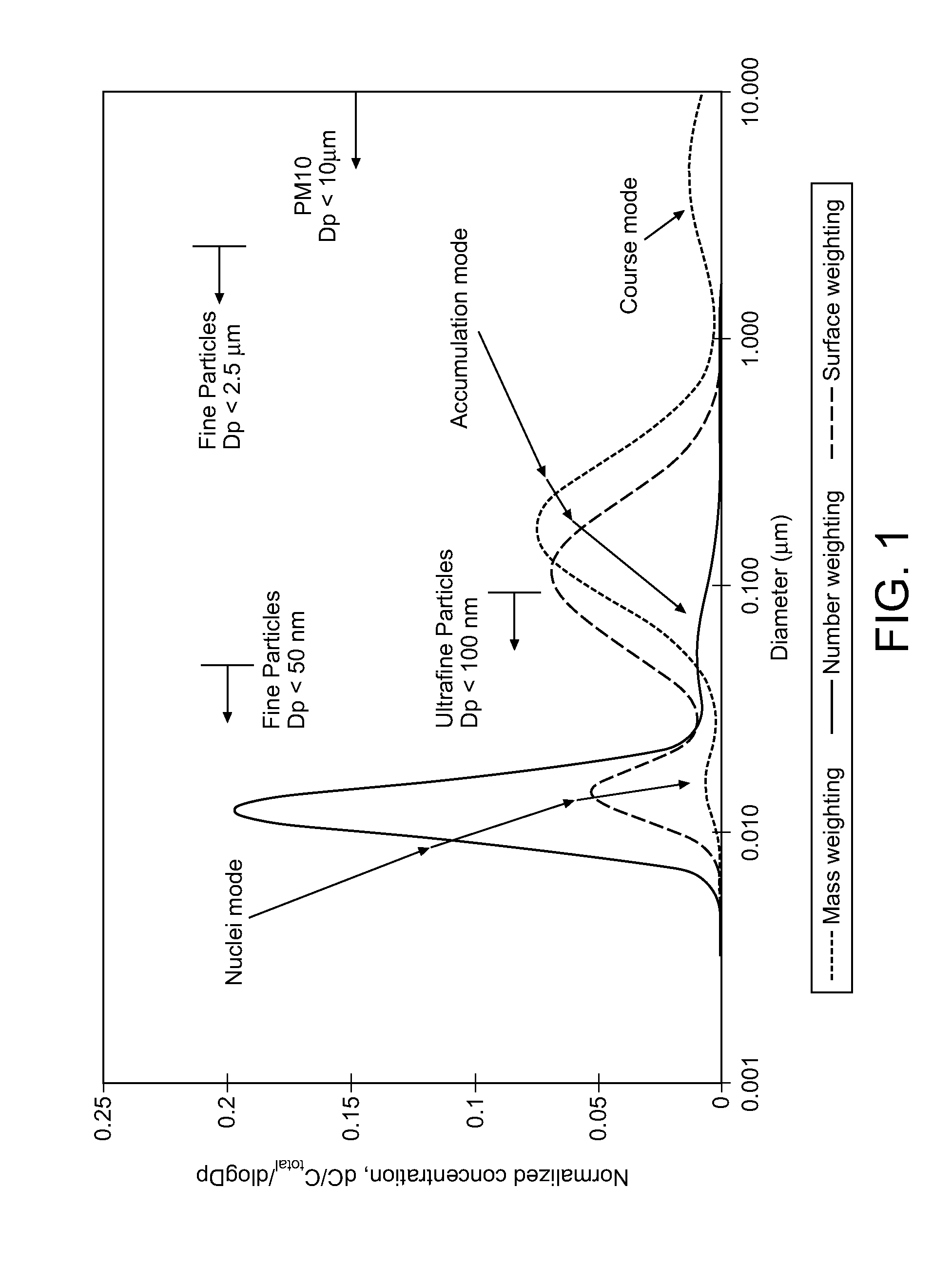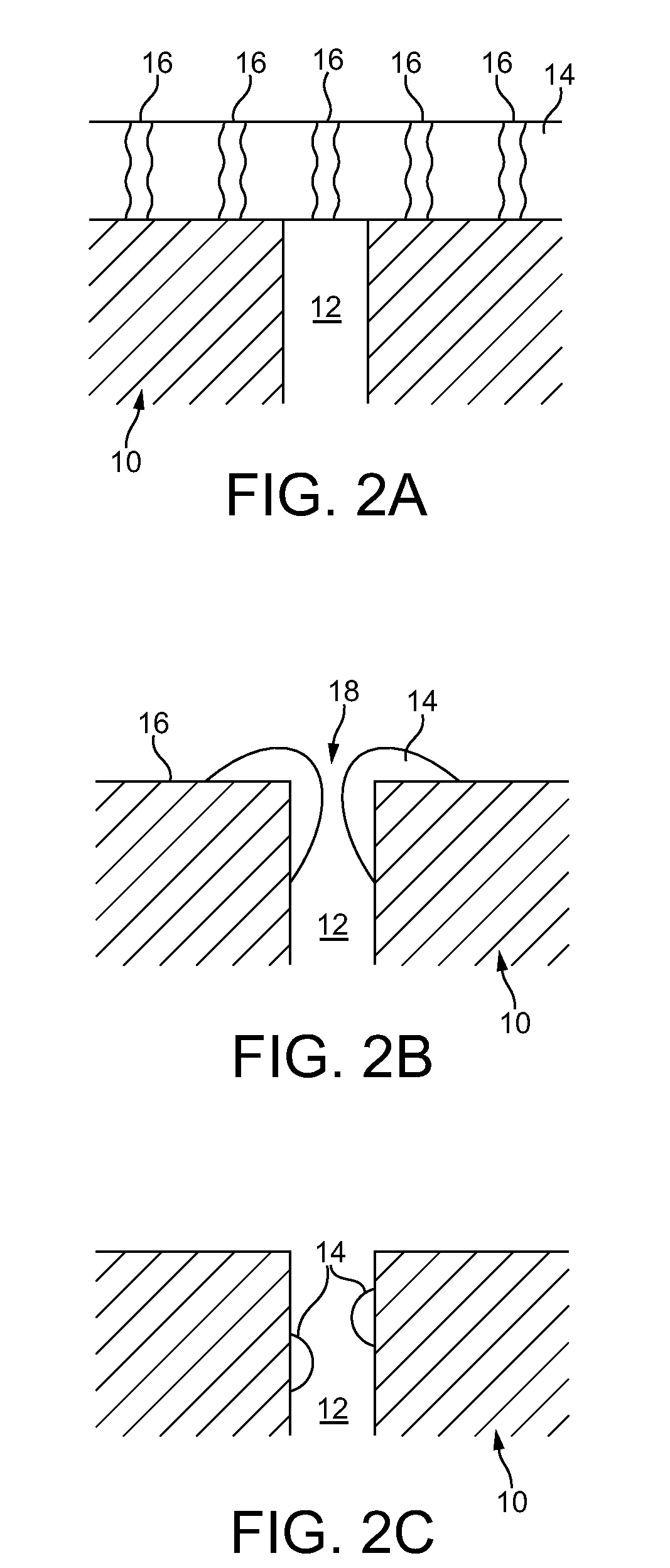Method and system using a filter for treating exhaust gas having particulate matter
a technology of exhaust gas and filter, which is applied in the direction of machines/engines, metal/metal-oxide/metal-hydroxide catalysts, etc., can solve the problems of too soon to know whether particulate filtration will be necessary for the californian or us vehicle market generally, and a number of design problems, so as to promote surface filtration
- Summary
- Abstract
- Description
- Claims
- Application Information
AI Technical Summary
Benefits of technology
Problems solved by technology
Method used
Image
Examples
example 1
[0107]Two three-way catalyst (TWC) coatings were prepared at a washcoat loading of 2.4 g / in3 and a precious metal loading of 85 g / ft3 (Pd:Rh 16:1); one was milled to a small particle size (d90 <5 μm) that would be expected to pass into the pore structure of a wallflow filter (“in-wall”), while the other was less milled (d90 <17 μm) so that it would be expected preferentially to locate more at the surface of a wallflow filter wall (“on-wall”). The coatings were applied to 4.66×4.5 inch 300 cells per square inch cordierite wallflow filter substrates having 12 thousandths of an inch wall thickness (“300 / 12”) with a nominal average pore size of 20 micrometers (hereinafter “microns”) (62% porosity). Each filter was hydrothermally oven-aged at 980° C. for 4 hours and installed in a close-coupled position on a Euro 5 passenger car with a 1.4 L direct injection gasoline engine. Each filter was evaluated over a minimum of three MVEG-B drive cycles, measuring the reduction in particle number ...
example 2
[0111]5.66×3 inch cordierite wallflow filter substrates with a cell density of 300 cells per square inch and a wall thickness of 12 thousandths of an inch (approximately 0.3 mm) were coated with a three-way catalyst (TWC) coating at a washcoat loading of 0.8 g / in3 and a palladium loading of 80 g / ft3. Three pore structures were compared: a nominal average pore size of 38 microns at 65% porosity, a nominal average pore size of 20 microns at 62% porosity and a nominal average pore size of 15 microns at 52% porosity. Each filter was hydrothermally oven-aged at 980° C. for 4 hours and installed in the underfloor position on a Euro 4 passenger car with a 1.4 L direct injection gasoline engine, with a fully formulated three-way catalyst coated on a flowthrough substrate monolith located in the close-coupled position, i.e. upstream of the filter. Each filter was evaluated over a minimum of three MVEG-B drive cycles, measuring the reduction in particle number emissions relative to a referenc...
example 3
[0113]4.66×4.5 inch, 300 / 12 cordierite wallflow filter substrates with a nominal average pore size of 20 microns and porosity of 62% were coated with a three-way catalyst coating at washcoat loadings of 0.8, 1.6 and 2.4 g / in3 respectively. Each sample had a precious metal loading of 85 g / ft3 (Pd:Rh 16:1). Each filter was hydrothermally oven-aged at 980° C. for 4 hours and installed in a close-coupled position on a Euro 4 passenger car with a 1.4 L direct injection gasoline engine. Each filter was evaluated over a minimum of three MVEG-B drive cycles, measuring the reduction in particle number emissions relative to a reference catalyst, wherein the close-coupled filter was exchanged for a TWC coated on a flowthrough substrate monolith at an identical washcoat and precious metal loading, the backpressure differential and the conversion efficiency for gaseous HC, CO and NOx emissions were determined between sensors mounted upstream and downstream of the filter (or reference catalyst). ...
PUM
| Property | Measurement | Unit |
|---|---|---|
| density | aaaaa | aaaaa |
| sizes | aaaaa | aaaaa |
| size distributions | aaaaa | aaaaa |
Abstract
Description
Claims
Application Information
 Login to View More
Login to View More - R&D
- Intellectual Property
- Life Sciences
- Materials
- Tech Scout
- Unparalleled Data Quality
- Higher Quality Content
- 60% Fewer Hallucinations
Browse by: Latest US Patents, China's latest patents, Technical Efficacy Thesaurus, Application Domain, Technology Topic, Popular Technical Reports.
© 2025 PatSnap. All rights reserved.Legal|Privacy policy|Modern Slavery Act Transparency Statement|Sitemap|About US| Contact US: help@patsnap.com



